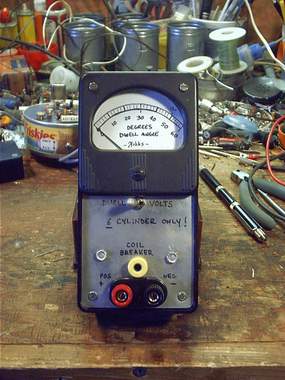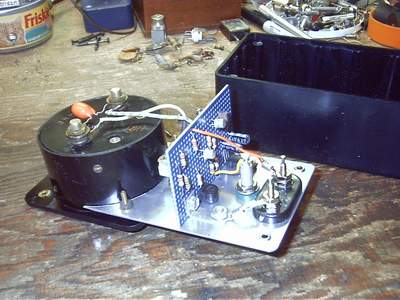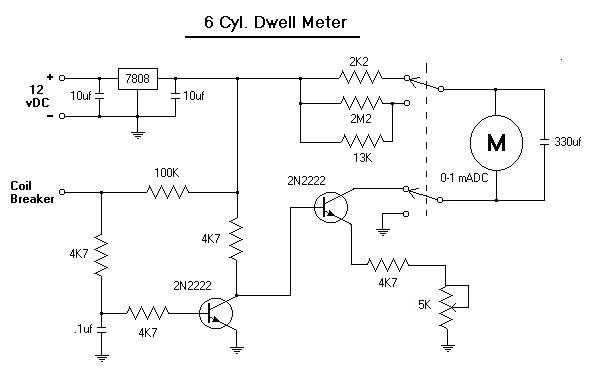I built this specifically for my Chevy PU so that no one would borrow it. It would be easy enough to add some resistors so it would work with 4 and 8 cylinders (in fact you would just use a 6.8KW resistor instead of a 4.7KW in series with the 5K variable resistor in case you're interested -see schematic below.) But most of my friends don't know this so they won't be borrowing it soon.
The switch has a "Volts" and a "Dwell" position. In the Volts position it measures 0-15 volts DC and I have marked 12 on the meter scale. In the Dwell setting it measures the angle of the dwell by averaging the on-off condition of the coil breaker points.



